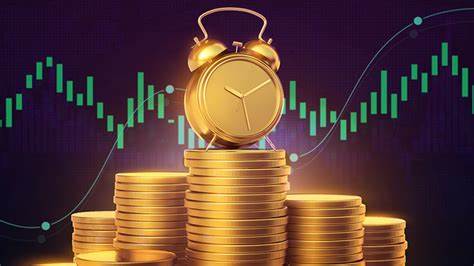Table of Contents
- Gold futures are a popular investment vehicle that allows traders to speculate on the future price of gold. As one of the most widely traded commodities in the world, gold futures offer investors an opportunity to hedge against economic uncertainty, inflation, and currency fluctuations. Understanding the trading hours for gold futures is essential for investors who want to maximize their trading opportunities and manage risk effectively.
- What Are Gold Futures?
- Major Exchanges
- Gold Futures Trading Hours by Exchange
- Time Zone Conversions
- The Bottom Line
 Gold futures are a popular investment vehicle that allows traders to speculate on the future price of gold. As one of the most widely traded commodities in the world, gold futures offer investors an opportunity to hedge against economic uncertainty, inflation, and currency fluctuations. Understanding the trading hours for gold futures is essential for investors who want to maximize their trading opportunities and manage risk effectively.
Gold futures are a popular investment vehicle that allows traders to speculate on the future price of gold. As one of the most widely traded commodities in the world, gold futures offer investors an opportunity to hedge against economic uncertainty, inflation, and currency fluctuations. Understanding the trading hours for gold futures is essential for investors who want to maximize their trading opportunities and manage risk effectively.
In this article, we’ll explore gold futures trading hours, covering the key exchanges, time zones, and factors influencing the trading session.
What Are Gold Futures?
Gold futures are agreements to buy or sell a specific amount of gold at a set price on a future date. They’re traded on the COMEX, a part of the CME Group. These contracts are traded on regulated exchanges, making them transparent and easy to buy and sell.
Gold futures let investors guess whether the price of gold will go up or down without owning gold. They’re popular with big investors, hedge funds, and individual traders who want to protect themselves from price changes or make money from gold price fluctuations.
Major Exchanges

There are several major exchanges where gold futures are traded, with the COMEX being the most prominent. However, other important exchanges include:
- CME Group (COMEX) – The largest and most active gold futures market.
- London Metal Exchange (LME) – Another significant market for gold derivatives.
- Shanghai Futures Exchange (SHFE) – Plays a growing role in global gold trading.
- Multi Commodity Exchange (MCX) – Based in India, offering gold contracts tailored to the local market.
While these exchanges have specific trading hours, the availability of electronic trading platforms means that gold futures can be traded almost 24 hours a day across different time zones.
Gold Futures Trading Hours by Exchange
1. CME Group (COMEX)
The CME Group (which includes COMEX) has both a floor-based trading system and an electronic platform called CME Globex. The electronic platform allows for nearly 24-hour trading, so investors can trade gold futures at any time of the day.
COMEX Trading Gold Hours:
- Electronic Trading (CME Globex): Sunday to Friday: 6:00 p.m. to 5:00 p.m. Eastern Time (ET)
- Trading halts from 5:00 p.m. to 6:00 p.m. ET each day for maintenance.
- Open Outcry (Pit Trading): Monday to Friday: 8:20 a.m. to 1:30 p.m. Eastern Time (ET)
The electronic trading platform is important for traders around the world because it gives them access to the gold futures market outside of the traditional pit trading hours.
2. London Metal Exchange (LME)
The LME offers gold futures contracts. It’s mostly known for metals trading gold futures, but it has a global influence on gold prices. However, unlike COMEX, the LME mainly operates during European business hours.
LME Trading Hours:
- Monday to Friday:
- 1st Session: 12:00 a.m. to 3:00 a.m. Eastern Time (ET)
- 2nd Session: 7:00 a.m. to 12:00 p.m. Eastern Time (ET)
3. Shanghai Futures Exchange (SHFE)
The SHFE is another important exchange for gold futures, especially in Asia. So, it has become more significant as China has become a major player in the global gold market.
SHFE Trading Gold Hours:
- Monday to Friday:
- 9:00 a.m. to 11:30 a.m. China Standard Time (CST)
- 1:30 p.m. to 3:00 p.m. CST
- Night trading session: 9:00 p.m. to 2:30 a.m. CST
4. Multi Commodity Exchange (MCX)
India is one of the biggest consumers of gold, and the MCX offers trading gold futures tailored to the local market. It’s a significant platform for traders in India and helps shape domestic gold prices.
MCX Trading Gold Hours:
- Monday to Friday: 9:00 a.m. to 11:30 p.m. India Standard Time (IST)
- Saturday: 9:00 a.m. to 2:00 p.m. IST
Time Zone Conversions

Gold futures are traded on exchanges around the world, so it’s important to understand time zone differences if you’re trading internationally. Here’s a simple guide:
- Eastern Time (ET): This is the standard time zone for the COMEX (CME Group).
- Greenwich Mean Time (GMT): The LME uses GMT.
- China Standard Time (CST): The SHFE operates in CST.
- India Standard Time (IST): The MCX uses IST.
To make sure you don’t miss important market movements, however, you should know the time zone of each exchange and adjust your trading schedule accordingly.
Gold futures are traded almost 24 hours a day, but market activity can change during different trading sessions due to several factors:
- Economic news: Important reports from the U.S., Europe, or Asia can affect gold prices and cause high volatility at certain times.
- World events: Global tensions or unexpected events can make gold prices fluctuate outside of regular trading hours.
- Currency markets: Gold is closely linked to the U.S. dollar, so changes in currency prices can drive gold price movements, especially when major currency markets (like the U.S. and Europe) are open at the same time.
- Stock markets: The opening and closing of major stock markets at Trading Gold Hours, like New York, London, and Tokyo, can influence the demand for gold futures as investors move their money between different assets.
The Bottom Line
Gold futures are a great way to participate in the global gold market. So, you can trade them almost 24 hours a day on platforms like CME Globex. This means you can take advantage of price changes at any time.
It’s important to understand the specific trading hours for major exchanges like COMEX, LME, SHFE, and MCX. This will help you maximize your opportunities and manage risk effectively. Whether you’re trading gold futures to make money or to protect yourself from price changes, knowing the trading hours and factors that affect market activity will help you succeed in this fast-paced market.



